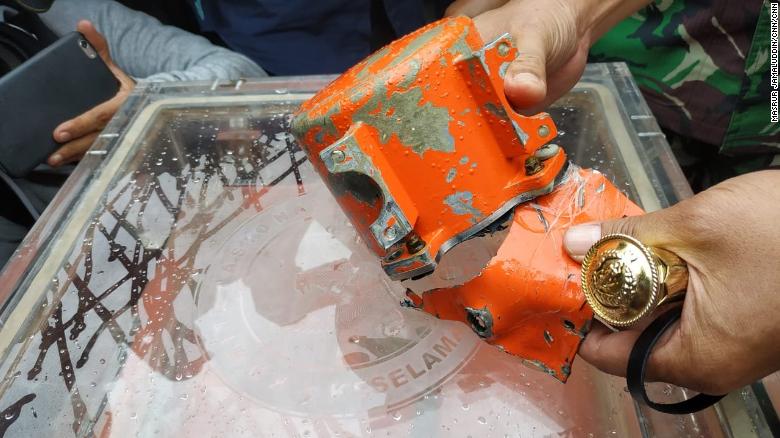Tense wait to download Lion Air voice data
14 January, 2019
4 min read
By joining our newsletter, you agree to our Privacy Policy


It could be another four to five days before potentially crucial audio can be downloaded from the recently recovered Lion Air Flight 610 cockpit voice recorder, according to Indonesian officials.
The second black box was found Monday by an Indonesian naval vessel and the device lifted on to the deck of the ship to cheers from divers and crew.
It was buried under 26ft (8m) of mud and found inside the current search area, Navy spokesman Lt Col. Agung told CNN.
The find comes two months after the Boeing 737 Max 8 aircraft with 189 passengers and crew plunged into the sea shortly after leaving Jakarta on October 29.
The hope is it will help determine how the crew reacted to problems stemming from a faulty sensor on the aircraft.
Indonesian investigators told reporters at a press conference the recorder must be dried for up to four days and cleaned for another day before the audio could be downloaded.
The so-called black boxes are designed to survive a crash and investigators are highly skilled at retrieving data but there is always an element of uncertainty.
A spokesman for Indonesia’s National Transportation Safety Committee (KNKT), Captain Nurcahyo Utomo, said investigators were not just interested in the conversation between the pilot and co-pilot.
“We also want to investigate other sounds in the cockpit — that will help us find out what happened and help us investigate what caused the crash,” he said.
Indonesian authorities had already recovered the flight data recorder and issued a preliminary report on the fatal crash in November.
A final report is expected to take 12 months but authorities could issue an interim report or make recommendations if they uncover something that threatens wider aviation safety.
The CVR is needed to give further insight into how the flight crew reacted to the sequence of events leading up to the crash and specifically to problems with the aircraft’s angle of attack sensors and stabilizer trim system.
A crew the previous night experienced similar problems but landed safely after shutting down the automatic trim system according to procedures.
However, the crew on the fatal flight appeared to fight the system until the end.
US law firm Gardiner Koch Weisberg and Wrona, which has launched legal action against Boeing on behalf of Flight 610 co-pilot Harvino, said it was prepared to review new evidence after the discovery of the CVR.
“We are pleased to know that the cockpit voice recorder has been found, and we look forward to reviewing this new evidence in order to seek justice for Harvino, his widow, and his three children,” said Tom Gardiner, attorney for Harvino’s estate.
The firm's lawsuit alleges that the aircraft’s sensors provided inaccurate information to the flight control system, improperly activating an anti-stall system that ultimately caused the aircraft to nose-dive into the ocean. It also claims Boeing failed to provide proper training to pilots regarding the 737 Max 8’s features.
A new addition to the MAX was a flight control law known as the Maneuvering Characteristics Augmentation System (MCAS).
MCAS was software introduced to take into account differences between the 737 MAX and its predecessor — such as the MAX’s greater power and different center of gravity — and ensure the new planes react to an aerodynamic stall in a manner consistent with their older counterparts.
The introduction of the software, which incrementally pushes down the nose in a stall, sparked controversy among pilots and some argued Boeing should have provided more information and training on the change.
Others contended the problems experienced by the Lion Air pilots were covered by long-standing procedures to deactivate a runaway stabilizer trim regardless of the cause.
READ The facts, the questions and the fiction of the Lion Air tragedy.
There have also been claims of maintenance lapses. The Wall Street Journal over Christmas reported that investigators had made a preliminary conclusion that the improper calibration of an angle attack sensor had touched off the sequence of events that led to the crash.
Lion Air has denied the maintenance claims.
Next Article
2 min read
Qantas triples profit but misses mark

Get the latest news and updates straight to your inbox
No spam, no hassle, no fuss, just airline news direct to you.
By joining our newsletter, you agree to our Privacy Policy
Find us on social media
Comments
No comments yet, be the first to write one.
